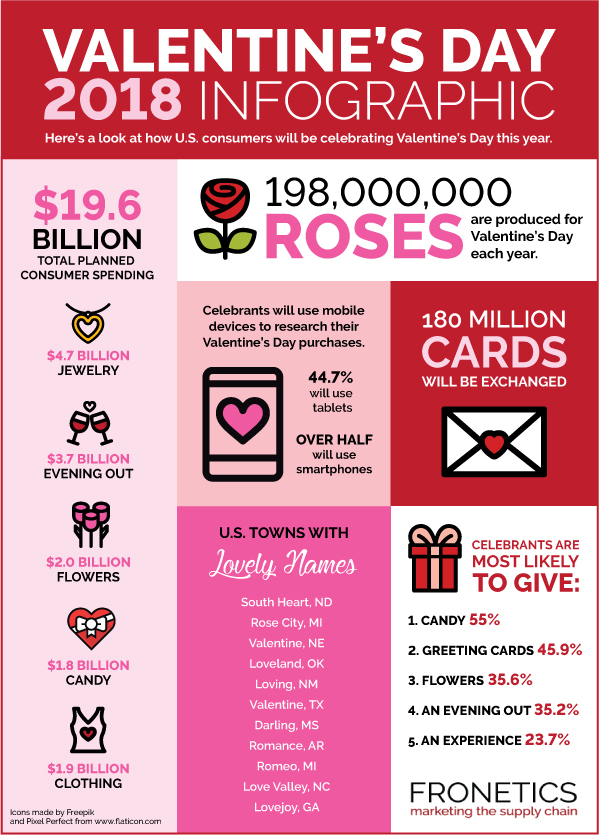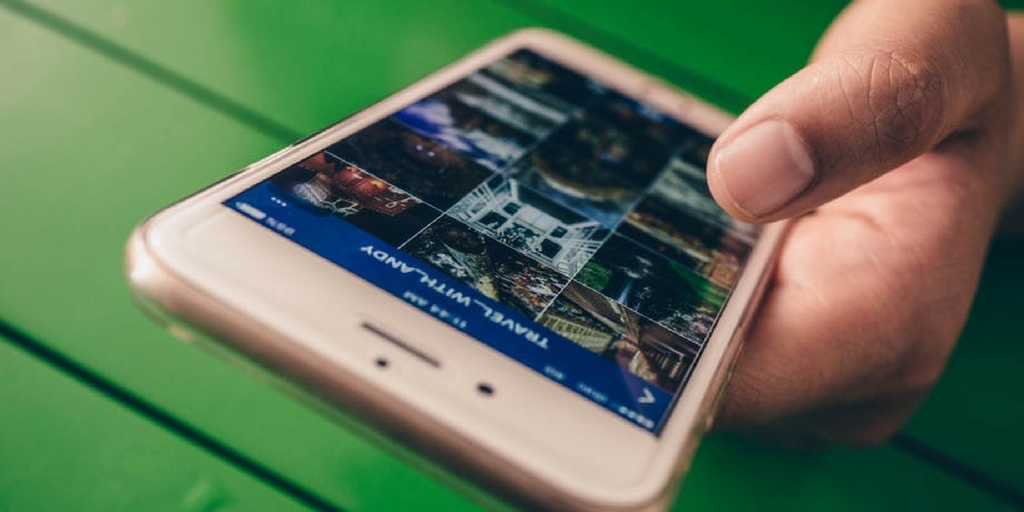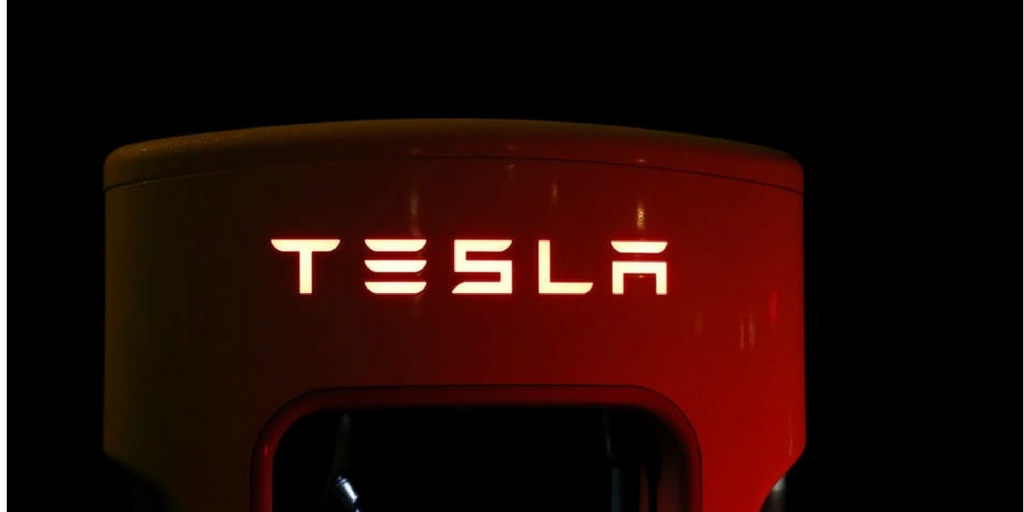
by Fronetics | Feb 27, 2018 | Blog, Content Marketing, Current Events, Marketing, Social Media
Also in social media news February 2018: Facebook is developing more sophisticated chatbots, Twitter’s increased character count leads to more tweets, and Instagram introduces a new content publishing beta for businesses.
The Olympics aren’t the only thing to keep an eye on this month. The results from the fourth quarter of 2017 show that social media sites are going for the gold when it comes to customer engagement.
Updates to the most popular sites have included longer character counts, more advanced conversational skills with chatbots, and new tools for easier sharing. All of these changes are working to improve user experience and help keep users active on the biggest sites.
Here’s your social media news for February 2018.
Instagram launches content publishing beta for businesses
Instagram’s latest update allows businesses to schedule photo posts, view posts they’ve been tagged in, and view other business profiles. Prior to this update, users would have to use a third-party tool to publish posts to the site. “This change helps businesses manage their organic presence more effectively,” writes Instagram on its business blog. This new feature is also open to Facebook Marketing Partners.
Facebook boosts local news posts
In a continued effort to increase customer engagement, Mark Zuckerberg shared the latest changes to Facebook’s News Feed. The site will now boost local events and news stories from high-quality sources. “We’re making a series of updates to show more high-quality, trusted news. Last week we made an update to show more news from sources that are broadly trusted across our community. Today our next update is to promote news from local sources,” writes Zuckerberg. The updates to News Feed are rolling out in the U.S., with plans to expand to other countries later this year.
Twitter launches Sponsored Moments
Twitter introduced a new sponsorship opportunity, Sponsored Moments, in which advertisers can run tweets designed around a specific event or theme. Similar to other in-stream sponsorships, advertisers can promote the moment to their specific target audience and expand their reach beyond the content partner’s existing followers. Twitter is hoping these changes will help advertisers be relevant “in the moment” and create opportunities for a more organic marketing reach.
Facebook developing new chatbots with better conversational skills
The Verge reports that Facebook is working on more sophisticated chatbots with a “consistent personality” and the ability to carry on better conversations. Feedback from Facebook’s FAIR lab showed that customers were unhappy with chatbots’ ability to provide context-based responses and their programmed responses, like “I don’t know,” when faced with questions they can’t answer. Facebook’s new research is looking for patterns in large datasets that will allow chatbots to converse in a more natural human dialogue.
Snapchat hits 187 million daily active users
Snap’s Q4 2017 Earnings Report showed that Snapchat gained 8.9 million daily active users during the last quarter, bringing its total to 187 million daily active users. While still not reaching Instagram and Facebook’s user numbers, this growth shows the largest increase in users since 2016. This increase included 3 million new users from outside of the U.S., a market Snapchat has just recently focused on expanding into.
Twitter’s increased tweet character count leads to more tweets
Back in November, Twitter increased its tweet size to 280 characters. Though most tweets aren’t using the additional characters, the platform has seen an increase in tweets. CEO Jack Dorsey stated that the recent expansion hasn’t actually changed the length of messages people are sending out — but it has led to more engagement.” The increased engagement has come from more retweets and mentions, higher follower rates, and less abandonment of tweets.
Facebook updates branded content policies
Facebook will no longer allow publishers to take money for posting media they didn’t create or weren’t involved in creating. These updates to the platform’s branded content policies also prohibits publishers from placing ads in video, audio or visual content and states that all branded content may only be posted using the branded content tool and has to feature the proper disclosures.
Related posts:


by Fronetics | Feb 26, 2018 | Blog, Content Marketing, Current Events, Logistics, Marketing, Social Media, Supply Chain
The second phase of Facebook News Feed changes boosts local news to strengthen community engagement.
Facebook has been busy making lots of changes to its algorithm and prioritizing what users want from the social media platform. Our recent blog post discussed the first phase of Facebook News Feed changes early this year. The second phase was just released January 29.
Mark Zuckerberg posted, “Starting today, we’re going to show more stories from news sources in your local town or city. If you follow a local publisher or if someone shares a local story, it may show up higher in News Feed.” The new emphasis on local news will begin in the U.S. and will expand to users in other countries later this year.
Civic engagement is key.
All of recent Facebook News Feed changes have centered around user engagement. Zuckerberg’s post talks a lot about the research his company has done to provide the best possible user experience and, in turn, to push for increased involvement.
“There’s a lot of research that suggests that people who read local news are more engaged in their community and they’re more likely to engage in civic improvements. The more informed you are about issues in your community, the more empowered you are to get involved and make a change,” writes Zuckerberg.
Back in January 2017, Zuckerberg went on the “Great American Road Trip,” where the CEO traveled to 23 U.S. states to spend time with everyday people and to gain insight into how Facebook might help local communities. The result? Zuckerberg has unveiled many changes that directly reflect an emphasis on civic engagement and using the power of Facebook to improve connection with local communities.
Trustworthy news.
Zuckerberg says he has directed his product teams to prioritize news that is “trustworthy, informative, and local.” Facebook will begin to survey users on the trustworthiness of media outlets and rank news sources accordingly. These changes continue to promote what Zuckerberg refers to as “meaningful” posts.
All of these changes are a part of a broader strategy for the News Feed and Facebook community. Facebook has declared that it will be prioritizing of content from friends and family and with this new phase, local news will also top that list.
What do Facebook News Feed changes mean for your business?
Businesses have been clamoring to keep up with the decline in organic reach from the first phase of Facebook News Feed changes. With the local news now taking priority behind more personal content, business pages are falling further down the Facebook News Feed. With more of an emphasis on person-to-person interactions, there’s less room overall for Page content.
But don’t give up on Facebook just yet. For smaller businesses, these changes could potentially boost user reach because of their concentrated reader population. Stories that are opened or shared in a tight geographic area will be ranked higher in the News Feed. So, if you’re looking to increase Page visits, make sure your newer content incorporates local news and events. This will (hopefully) catch the eye of local residents and users and push your content higher up in the News Feed.
Has your business been affected the Facebook news feed changes? We’re all working to keep up with the new algorithms and how they impact our business pages. Let us know in the comments.
Related posts:


by Fronetics | Feb 20, 2018 | Blog, Content Marketing, Current Events, Logistics, Marketing, Social Media, Supply Chain
One of 2018’s fastest growing marketing trends is influencer marketing. Companies will increase their influencer marketing budget to keep up with the competition.
You’ve probably heard the buzzword by now: Influencer marketing seems to be on the tip of every marketer’s tongue these days. Linqia’s latest report, The State of Influencer Marketing 2018, shows that B2C companies are already taking full advantage of this marketing trend. Their report shows that 86% of B2C marketers used influencer marketing in 2017, and 92% of marketers that tried it found it to be effective.
B2B marketers, on the other hand, have been slower to adopt this new marketing trend. Influence 2.0 – The Future of Influencer Marketing Research Report 2017 showed that only 11% of B2B marketers have an ongoing influencer program.
To understand why influencer marketing is becoming so popular and why B2B companies need to jump on the trend, let’s start with the basics.
What is influencer marketing?
Influencer marketing is a form of marketing in which focus is placed on influential people, rather than the target market as a whole. Marketers identify individuals that have influence over potential buyers and create marketing campaigns and activities around these influencers.
For example, Microsoft teamed up with National Geographic last year to launch an influencer marketing campaign, called “Make What’s Next.” The technology giant leveraged some of the most famous adventure photographer influencers on Nat Geo’s Instagram for the campaign. The objective was to bring awareness to young women with interest in science, technology, engineering and math (STEM). By utilizing Nat Geo’s most heavily followed female photographers, Microsoft was able to access a built-in following.
Why influencer marketing works.
Influencer marketing is extremely effective because of three key components:
- Social reach: Influencers can reach millions of followers (and consumers) through their social media channels, websites, and blogs.
- Original content: Influencers work with marketers to produce original content for your brand.
- Consumer trust: Through their existing, strong relationships with their audiences, influencers have a built-in level of trust and can influence consumer opinions.
Content marketers are working overtime to update their content marketing strategies to include influencer marketing campaigns. Consumers no longer want to hear from brands about their products; they want someone they trust to recommend products and services. This is where influencer marketing comes in to play.
Marketers across industries found influencer marketing to be so effective in 2017, that 52% of are planning programs that leverage multiple types of influencers (celebrities, top-tier bloggers, micro-influencers) in 2018.
Where do you begin?
Instagram should be your starting point. According to new research, influencer marketing on Instagram will have generated over $1 billion by the end of 2017, with significant annual growth going forward. With more than 700 million users, Instagram’s platform allows influencers to easily share photos and videos with their followers. Product promotion has never been easier.
Boxed Water turned to Instagram influencer marketing to market its philanthropic campaign, The ReTree Project. The company paired with social influencers, like actors Aidan Alexander and Jaime King, and YouTube star Megan De Angelis, to spread the word about their new campaign. These popular Instagram users asked consumers to post a photo with the hashtag #ReTree and, in turn, Boxed Water would plant two trees for every photo posted. Just one month after launching the campaign, Boxed Water generated more than 2,600 posts with the hashtag.
With 39% of marketers planning to increase influencer marketing budget this year, B2B companies are quickly seeing the leverage that influencers can have over their target audiences. By pairing your products or services with the right influencer, marketers can easily tap into thousands of potential consumers, increasing website traffic and leads.
Have you tried influencer marketing? How was your experience?
Related posts:


by Fronetics | Feb 12, 2018 | Blog, Current Events, Logistics, Manufacturing & Distribution, Supply Chain
As Cupid spreads his wings, gifts of experience and romantic, at-home options will take over the market for Valentine’s Day 2018.
Consumers will spend a near-record $19.2 billion on Valentine’s Day 2018, up from $18.2 billion in 2017. According to NRF’s annual survey, over half of the country will participate (55%) in the romantic holiday, spending just over $140 on average.
Gifts of experience
A new Valentine’s trend is giving gifts of experience, such as a spa treatment, concert tickets, or a cooking class. Almost half of celebrants said they would prefer a gift of experience, and 23% said they plan on giving a gift of experience. Blue Apron’s Love at First Bite targets couples looking for gifts of experience with a foolproof, stay-at-home option for Valentine’s Day 2018. And they’re not the only ones! Hello Fresh, Plated and even Whole Foods are publishing blog articles and offering meal options for creating the perfect Valentine’s dinner from the comfort of your own kitchen.
Out on the town
The NRF’s survey also found that younger people (ages 18-34) are more likely to take their Valentine out for the evening than older generations. So it’s no surprise that 6 out of 10 younger celebrants (ages 18-34) would also prefer a gift of experience over candy and flowers.
Mobile trend
95% of Americans own a cell phone. The growing connection between smartphones and digital information is starting to take over Valentine’s Day, as well. Over half of participants plan to use their smartphones to assist with Valentine’s Day purchase decisions. Nearly 40% said they plan to use their cell phone to research products and compare prices.
Tradition prevails
Not to worry, though: Celebrants will still purchase plenty of flowers, jewelry and candy to mark the holiday. Celebrants are most likely to give candy as a gift, followed by greeting cards, flowers, and an evening out.
Here’s a look at how U.S. consumers will be celebrating Valentine’s Day 2018.
Valentine’s Day 2018 Supply Chain Infographic

Related posts:


by Fronetics | Jan 31, 2018 | Blog, Content Marketing, Current Events, Marketing, Social Media
Also in social media news January 2018: SnapChat is considering 3-second unskippable ads; Twitter will now display a video count on all video tweets; and Facebook is rolling out custom audiences for users that linger on ads.
The new year has brought lots of new changes, especially to the Facebook community. I’m sure by now you have heard about the updates to Facebook’s News Feed that are having major impacts on business page’s organic reach. But the changes don’t stop there. Twitter, Snapchat and Instagram are trying to follow Facebook’s lead and enhance their user experience. Through updates that include video counts, enhanced data collection, and recommended posts, social media is working overtime to make sure it’s active users are staying active.
Here’s your social media news for January 2018.
Facebook’s News Feed tweak penalizes pages soliciting likes and shares.
Facebook continues to make changes to News Feed — including limiting the amount of content users will see from Pages. See our full update here. Facebook also is tightening the reigns on Pages and individuals that use engagement bait to attract new followers. The site will now penalize posts that ask people to like, share, comment on, or otherwise engage with the post to boost engagement. Posts “that systematically and repeatedly use engagement bait to artificially gain reach in News Feed … will now be shown less,” the company announced in early January.
Twitter rolls out account activity API for powering customer service and chatbots
Twitter introduced a new API that will offer developers access to real-time activities, like tweets, mentions and replies, to help update their customer service tools and chatbots. The latest version of Twitter’s data collecting software is designed for those who need data for a large number of accounts, multiple URLs, or managed support.
Instagram allows users to send live video in direct messages
Instagram announced that users can now send live videos through direct messaging. By tapping on the Direct icon, users can send live video to a friend or group to encourage them to view the content. “Today’s change makes it easy to invite people to watch your live videos and send exciting live videos you’re viewing to your friends in real time,” says the announcement.
SnapChat contemplating 3-second unskippable ads
AdAge reports that Snap Inc. is giving “serious consideration” to adding 3 seconds of commercial breaks before offering a skip option on ads on SnapChat. This new ad format was created to attract more ad dollars from brands. “Advertisers are not spending as much as they have previously with SnapChat,” says the top advertiser from a brand that works closely with the messaging service. “They have to do something that draws more interest from advertisers, and they are getting more aggressive to address the market’s needs.” If implemented, the postponed skip option would be similar to YouTube’s ad experience.
Facebook testing custom audiences for users lingering on ads
Matt Navarra, director of social media for @TheNextWeb, reported a new option for targeting a list of people who have “spent more time than usual viewing your display ads on Facebook and Instagram.” The new custom audience option, called Dwell, is an expanded version of Dwell Time, which targeted people who spent any time viewing an ad. In theory, this new custom-audience option will give advertisers the ability to re-target users who viewed your ads but didn’t take any action.
Twitter displays video count on all video tweets
Twitter is adding a video count to all organic and video ads. In compliance with the Media Rating Council’s video viewability standard, Twitter will count a view once the video has been played for at least 2 seconds and with at least 50% of the video in view. This new update is a minor change to support the company’s mission to make the platform more attractive to users. “View counts are a subtle way to encourage people to share more video to the service if they feel their content is being widely seen,” writes Garrett Sloane for Adage.
Instagram rolls out recommended pages
Instagram has officially started recommending posts to users based on posts that have been liked by other accounts the user follows. The new feature is being compared to Facebook’s Explore Feed, where users can view content from a wider network, not just people and pages they follow directly. But don’t worry, the update isn’t meant to replace a user’s preferred content. The section will appear after a user has viewed all the posts in their feed, an Instagram spokesperson explains, while confirming the feature’s public launch to TechCrunch.
Related posts:


by Jennifer Hart Yim | Jan 30, 2018 | Blog, Current Events, Logistics, Supply Chain
Looking at Tesla’s suppy chain issues, here are the biggest takeaways so you don’t have to repeat their mistakes.
This guest post comes to us from Argentus Supply Chain Recruiting, a boutique recruitment firm specializing in Supply Chain Management and Procurement.
Back in 2016, we posted about Tesla’s ambitious plan to ramp up production of its consumer-grade Model 3 electric car to 500,000 vehicles a year by 2020. At the time, pretty much every analyst agreed that was an ambitious target for a manufacturer without solid experience mass-producing vehicles at that scale. In the two years since, Tesla’s CEO Elon Musk has issued a number of other bold predictions. He’s championed a whole host of emerging technologies. He’s made the world feel like the future could resemble a sci-fi novel – were he to deliver on the herculean tasks of sending humans to mars, shifting the world to solar power production, and figuring out how to directly connect computers to human brains.
But in the meantime, there’s also been the pesky matter of the more mundane – but seemingly no less difficult – task of delivering on the very high demand in the marketplace for Tesla Model 3s. In 2016, the company faced scrutiny for allegedly hiring 140 workers from Eastern Europe for $5 an hour. Then, in 2017, various press outlets reported on a number of issueswith the Model 3’s Supply Chain, specifically issues related to the vehicle’s battery design, as well as issues with manufacturing automation. The result?
Only 220 Model 3s were delivered as of October 2017. We’re sure the company has delivered more cars since then, but that’s a brutal statistic almost two years after over 400,000 consumers paid $1000 each to preorder the car. Investors are growing restive, with the company’s share price down 6.8%, and the company reporting a $671.1 million loss for the 3rd quarter of 2017. Musk has compared the Model 3’s current production state to the “8th circle of hell,” and acknowledged that Tesla won’t hit the goal of 5,000 units produced a month until “sometime in March 2017.”
A great article last month from CIPS’ industry magazine Supply Management dove into some of Tesla’s Supply Chain woes, discussing how the company, still considered a visionary in the industry, has got to this place, as well as some optimistic scenarios for how it can get out of it. Written by Paul Simpson, it’s an interesting account of how Supply Chain issues can stymie a company, even if that company and product have huge positive brand association. Similarly to what we did with analysis of Target’s Canadian misadventure, we wanted to see what lessons we can draw from Tesla’s Supply Chain issues that might be useful in industries other than automotive manufacturing.
Here are our biggest takeaways for what can be learned from Tesla’s Supply Chain woes:
- If you’re not confident that your production and Supply Chain are up to snuff, don’t overpromise to the consumer. Elon Musk has made a cottage industry out of bold pronouncements about the future, and he’s delivered on some of them before. It’s why he’s gained a reputation as a visionary. Musk had to know that promising to quickly scale up production to 500,000 cars a year was an unrealistic goal. He’s also someone who believes in setting big goals as a way of achieving the impossible. But even with that in mind, it’s possible he also underestimated the inevitable difficulties in mass-producing a product with 10,000 individual parts, and that’s led to way too many 2 a.m. nights tinkering with robotics on factory floors.For his part, Musk acknowledged that he’s now trying not to make pronouncements about production timelines.
- Take ownership for Supply Chain failures rather than blaming suppliers. Even if suppliers are failing to deliver, consumers (and, relevant to Tesla, shareholders) will almost always blame the company itself rather than those suppliers – and rightly so. They’re the ones who selected those suppliers, after all. In Tesla’s case, Musk took personal ownership over the decision to select the system integration subcontractor that’s behind the latest delays – instead of blaming his Supply Chain staff. Depending on your perspective, you can either look at this as a visionary CEO being transparent about Supply Chain difficulties, or a manufacturer throwing a supplier under the bus.
- Great companies need a Supply Chain guru. Simpson quotes an argument by American journalist Travis Hoium, who said that “Elon Musk Needs his Own Tim Cook to Take Over Operations.” Drawing a parallel to Steve Jobs, Hoium argues that Musk needs an operations genius who can match his vision for the future and product development excellence with Supply Chain execution. Sometimes business leaders – especially those with the vision of someone like Elon Musk – overrate their own ability to understand the intricacies of managing complex Supply Chains, to their detriment. Tesla’s issues underscore the importance of having the right talent in place to avoid the murky waters of Supply Chain failure – and figure out how to right the ship if things go awry.
Despite these numerous issues, it looks like – for now – Tesla is facing more heat from shareholders than consumers. Anticipation for the Model 3 is still high, showing that a strong product and brand can trump some Supply Chain issues. But these issues are starting to have a real impact on Tesla’s share price and bottom line, and the pressure is on. Let’s see how this story develops as 2018 proceeds.
Related posts:









